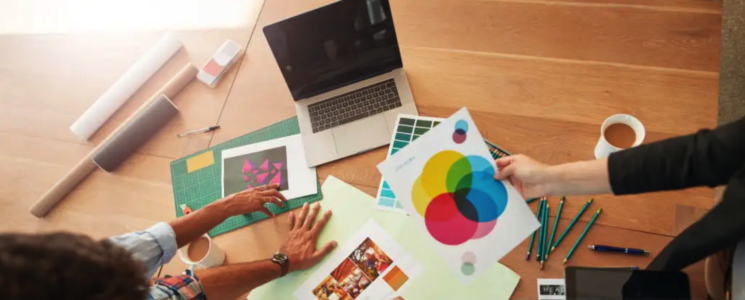What Makes a Great Brand Designer Subcontractor (for Logos, Color Palettes, and Visual Identity)

When you’re a solopreneur or building a lean startup, how you look often matters just as much as what you do. Your logo, colors, and visual identity shape your first impression—and in many cases, they’re your brand handshake with the world.
But hiring a full-service agency is often out of reach for early-stage businesses. Enter: the subcontractor Brand Designer. The right one can help you define your brand’s look and feel quickly, strategically, and beautifully. The wrong one? You’re left with a trendy-but-generic logo and a color palette that looks like it came from a YouTube tutorial.
Here’s how to identify a great brand designer subcontractor—one who creates assets that feel like you and stand the test of time.
Why Hire a Brand Designer Subcontractor?
A great designer helps you:
- Look credible and consistent across all touchpoints
- Create a memorable visual identity that fits your brand personality
- Attract your ideal audience with the right emotional tone
- Save time when designing new materials (everything matches)
- Set the foundation for your website, marketing, packaging, and more
For solopreneurs and small teams, a strong visual identity isn’t a “nice to have”—it’s a strategic shortcut to trust and connection.
What Makes a Great Brand Designer Subcontractor?
1. They Start With Strategy, Not Just Aesthetics
Before opening Figma or Illustrator, a great brand designer will ask:
- What do you want your brand to feel like?
- Who are your ideal customers?
- What words describe your brand personality?
- Where will your brand show up most—Instagram? Packaging? YouTube?
They turn abstract answers into a clear visual direction—so your brand doesn’t just look good, it feels aligned.
2. They Build a Flexible, Scalable Brand System
You’re not just paying for a logo—you’re investing in a visual foundation. A strong subcontractor will deliver:
- A primary logo, secondary logo, and icon/favicon versions
- A clear, accessible color palette with primary, secondary, and neutral tones
- A well-paired typography system for headers, body, and CTA text
- Brand guidelines that explain when and how to use everything
- Optional: textures, patterns, or custom graphic elements that match the vibe
This way, your brand looks consistent whether you’re sending a newsletter or printing business cards.
3. They Match (or Help You Discover) Your Brand Personality
Your brand might be bold and loud. Or minimal and soothing. Or quirky and fun.
A great brand designer doesn’t just follow trends—they help your visual identity match your:
- Tone of voice
- Audience expectations
- Industry positioning
- Core values and vibe
They’ll show you why a certain shade of blue, typeface, or spacing style fits your brand—not just “what’s popular.”
4. They Present Concepts Clearly and Collaboratively
Strong designers don’t just email over files and disappear. They walk you through the thinking behind the visuals:
- Mood boards to align early
- Logo sketches or concepts with rationale
- Color exploration with emotional context
- Mockups (e.g., website headers, social posts, packaging) to show things in action
Great subcontractors are not precious about feedback—they listen, refine, and iterate with your goals in mind.
5. They Deliver Assets You Can Actually Use
You don’t want a beautiful logo stuck in a file format you can’t open. Great designers will give you:
- Vector formats (.SVG, .AI, .EPS) for infinite scaling
- Web formats (.PNG, .JPG) for social and digital use
- Fonts or links to download them (with proper licensing)
- Color codes in HEX, RGB, and CMYK for all media
- A one-pager or PDF brand guide (even at the starter level)
If they only deliver a logo file with no system behind it? Keep looking.
6. They Understand Digital Contexts
If your brand lives online (which it likely does), your designer should know how your identity will play out in real life:
- Does the logo work in a favicon or profile photo circle?
- Will your colors meet accessibility contrast standards?
- How will your font choices look on mobile screens?
- Will your brand elements scale well on social graphics, slides, and videos?
This isn’t about print design alone—it’s about visual identity in action.
🚨 How to Spot a Bad Brand Designer (Before You Get Stuck With a Bad Logo)
Unfortunately, it’s easy to get burned by someone who has tools but not taste—or process. Watch out for these red flags:
❌ They Don’t Ask You Any Questions
If they jump straight to design without learning about your brand, you’re getting a generic result.
❌ Their Portfolio Looks Trendy, But All the Same
If all their logos have the same font or aesthetic, they may not have real range.
❌ They Deliver Only a Logo File, No System
If you don’t get a color palette, font pairing, or any guidance, you’ll be stuck later.
❌ They Can’t Explain Their Design Choices
If they say “I just liked how it looked,” that’s a problem.
❌ They Get Defensive About Feedback
A good designer should welcome your perspective—after all, it’s your brand.
Where to Find Great Brand Designers
Some of the best freelancers live in design-forward communities. Try:
- Dribbble – For browsing design portfolios and hiring directly
- Upwork – Filter by brand identity, logo design, and reviews
- Contra – Vetted creative freelancers with clean portfolios
- Fiverr Pro – Look for “brand identity package” specialists
- Twitter / X – Designers often post process reels, case studies, and availability
- Referrals – Ask founders or creators with brands you admire who they used
What to Ask Before Hiring a Brand Designer
- Can I see 2–3 examples of logos and brand systems you’ve created?
- What’s your process for learning about my brand before designing?
- What exactly is included in your deliverables (logo, colors, fonts, guide)?
- Will I get both print and web-ready versions?
- How many revisions are included, and what’s your typical turnaround?
The right subcontractor brand designer doesn’t just hand you a pretty logo—they craft a visual identity that supports your vision, resonates with your audience, and gives you the confidence to show up like a pro.


